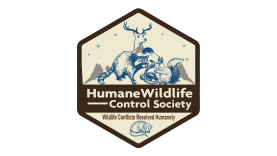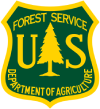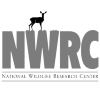Humane Wildlife Control in Providence, RI
The Humane Wildlife Control Society recommends non-invasive solutions to resolve human-wildlife conflicts. This includes:
Determining if the issue needs to be addressed at all
Opting for preventative measures first
Opting for wildlife exclusion as opposed to trapping
If trapping is the only way to solve the problem do so humanely
The Humane Wildlife Control Society screens candidates prior to recommendation. Our process requires any company we recommend to meet the following criteria:
Is properly licensed in Rhode Island for wildlife control
Carries appropriate business licenses and insurance
Complies with all Rhode Island laws and regulations for wildlife control
Adheres to the humane principles listed above.
In Providence, Rhode Island we recommend Humane Wildlife Removal Providence for professional wildlife control services. This is a private company that charges for their services.
Contact Information:
Wildlife Removal Rhode Island
401-223-4430
If you have any wildlife issues that can be handled by the state government agency for free, the Rhode Island Wildlife Commission can help.
State Contact Information: 401-789-0281
The State Department of Agriculture may also be able to address your wildlife problem for no charge.
USDA Contact Information: (401) 222-2781
Navigating Wildlife Risks: A Humane Approach for Providence Businesses Providence, Rhode Island’s position within a biodiverse region presents businesses with the potential for wildlife interactions. While these encounters can be part of the local landscape, they can also pose risks to property, safety, and business operations. This guide outlines a legally sound and humane approach for Providence businesses to mitigate wildlife risks, ensuring compliance and ethical practices. Understanding the Legal Landscape Proactive Prevention: Minimizing Wildlife Encounters Property Maintenance: Regularly inspect and maintain buildings, sealing cracks and openings to prevent animal entry. Trim trees and shrubs away from structures to limit access. Install chimney caps and vent screens to block entry points. Waste Management: Implement strict waste management practices. Use animal-resistant garbage containers with secure lids. Promptly clean up spills and dispose of food waste properly. Secure dumpsters and loading docks to prevent scavenging. Landscape Management: Design and maintain landscaping to minimize wildlife attractants. Avoid planting vegetation that provides food or shelter for nuisance species. Maintain clear perimeters around buildings and parking areas. Food Storage: Ensure all food storage areas are secure and inaccessible to wildlife. Implement pest control measures to prevent rodent infestations. Employee Training: Educate employees on wildlife awareness, safe interaction protocols, and reporting procedures. Humane Mitigation Strategies Exclusion: Utilize exclusion techniques, such as one-way doors and barriers, to allow animals to exit structures safely while preventing re-entry. Deterrents: Employ humane deterrents, such as motion-activated sprinklers or lights, to discourage wildlife from specific areas. Use species-specific repellents according to product instructions. Habitat Modification: Modify landscaping and remove attractants to discourage wildlife from establishing territories on business property. Live Trapping and Relocation (Use with Caution): Live trapping and relocation should be considered only as a last resort and in strict compliance with RIDEM regulations. Relocation is not always beneficial for the animal and should only be performed by a licensed professional. Licensed Wildlife Control Professionals: Engage the services of licensed wildlife control professionals for complex situations or when dealing with protected species. These professionals possess the expertise to handle wildlife removal and mitigation safely and humanely. Legal and Ethical Considerations Compliance with RIDEM Regulations: Ensure all wildlife management activities comply with state regulations. Humane Treatment: Prioritize humane methods that minimize animal suffering. Protected Species: Recognize and respect protected species and obtain necessary permits for any intervention. Public Safety: Prioritize public safety while implementing mitigation measures. Documentation and Reporting Conclusion By embracing humane wildlife control, businesses not only protect their interests but also demonstrate a commitment to ethical practices and environmental stewardship. Together, we can create a community where people and wildlife thrive side by side.
Businesses in Providence must operate within the framework of state and federal wildlife regulations. The Rhode Island Department of Environmental Management (RIDEM) is the primary regulatory body, overseeing wildlife management within the state. Businesses must adhere to RIDEM regulations regarding protected species, trapping, relocation, and nuisance wildlife. Additionally, federal laws, such as the Migratory Bird Treaty Act, protect certain species, imposing further restrictions. Familiarity with these regulations is paramount to avoid legal penalties and ensure responsible practices.
The most effective strategy for mitigating wildlife risks is proactive prevention. Businesses should implement the following measures:
When wildlife conflicts arise, businesses should prioritize humane mitigation strategies:
Businesses must adhere to the following legal and ethical considerations:
Businesses should maintain accurate records of wildlife interactions, mitigation efforts, and any incidents involving wildlife. Report any incidents involving protected species or potential public safety hazards to the RIDEM.
Providence businesses have a responsibility to mitigate wildlife risks responsibly and ethically. By implementing proactive prevention measures, prioritizing humane mitigation strategies, and adhering to legal requirements, businesses can minimize conflicts, protect their operations, and contribute to the well-being of the local ecosystem. Fostering a culture of responsible coexistence is essential for maintaining a harmonious balance between business operations and the natural environment in Providence.







